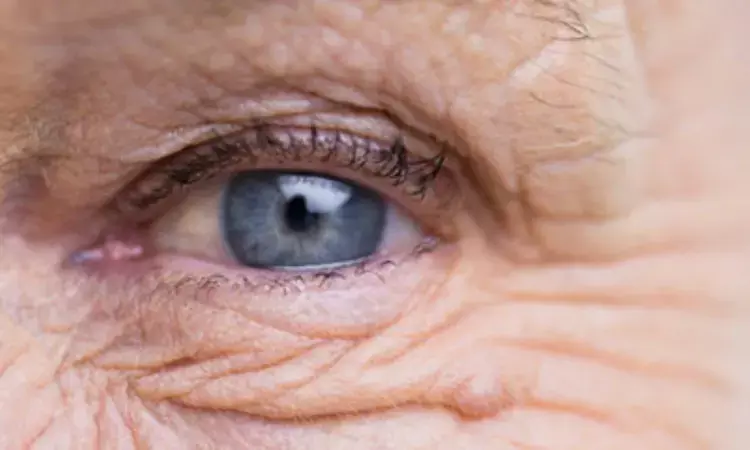- Home
- Medical news & Guidelines
- Anesthesiology
- Cardiology and CTVS
- Critical Care
- Dentistry
- Dermatology
- Diabetes and Endocrinology
- ENT
- Gastroenterology
- Medicine
- Nephrology
- Neurology
- Obstretics-Gynaecology
- Oncology
- Ophthalmology
- Orthopaedics
- Pediatrics-Neonatology
- Psychiatry
- Pulmonology
- Radiology
- Surgery
- Urology
- Laboratory Medicine
- Diet
- Nursing
- Paramedical
- Physiotherapy
- Health news
- Fact Check
- Bone Health Fact Check
- Brain Health Fact Check
- Cancer Related Fact Check
- Child Care Fact Check
- Dental and oral health fact check
- Diabetes and metabolic health fact check
- Diet and Nutrition Fact Check
- Eye and ENT Care Fact Check
- Fitness fact check
- Gut health fact check
- Heart health fact check
- Kidney health fact check
- Medical education fact check
- Men's health fact check
- Respiratory fact check
- Skin and hair care fact check
- Vaccine and Immunization fact check
- Women's health fact check
- AYUSH
- State News
- Andaman and Nicobar Islands
- Andhra Pradesh
- Arunachal Pradesh
- Assam
- Bihar
- Chandigarh
- Chattisgarh
- Dadra and Nagar Haveli
- Daman and Diu
- Delhi
- Goa
- Gujarat
- Haryana
- Himachal Pradesh
- Jammu & Kashmir
- Jharkhand
- Karnataka
- Kerala
- Ladakh
- Lakshadweep
- Madhya Pradesh
- Maharashtra
- Manipur
- Meghalaya
- Mizoram
- Nagaland
- Odisha
- Puducherry
- Punjab
- Rajasthan
- Sikkim
- Tamil Nadu
- Telangana
- Tripura
- Uttar Pradesh
- Uttrakhand
- West Bengal
- Medical Education
- Industry
Machine Learning Flags Key Risks for Early Macular Degeneration: Hypertension, Joint Disorders, and Dyslipidemia: Study

USA: A new study published in Investigative Ophthalmology & Visual Science and presented at the 2025 ARVO Annual Meeting has identified critical comorbidities that may help predict early-onset age-related macular degeneration (AMD). Conducted by Ethan Wu and colleagues from the University of Pittsburgh School of Medicine, the study leveraged machine learning to examine how systemic health conditions influence the early development of AMD—a major cause of visual loss among the aging population.
The study analyzed data from 930 individuals diagnosed with AMD, categorizing them into two groups: early-onset (before age 65; n=392) and late-onset (after age 85; n=538). To enable standardized comparisons, only comorbidities identified before age 55 were included. The researchers extracted demographic and health information from electronic medical records to construct detailed patient profiles.
Using unsupervised clustering via Uniform Manifold Approximation and Projection (UMAP), the team identified three distinct patient clusters based on comorbidity patterns. Cluster 1 had the highest proportion of early-onset AMD cases (76.09%) and was notably marked by inflammatory joint disorders (60.1%) and hypertension (34.1%). Cluster 2, which also had a high burden of early-onset AMD (69.83%), showed a significant association with hypertension (25.9%). In contrast, Cluster 3 had the lowest rate of early-onset cases (27.02%) and presented minimal or no comorbidities.
To assess predictive potential, the researchers applied machine learning models—including gradient-boosted decision trees and random forests—to comorbidity data. The gradient-boosted decision tree model achieved a prediction accuracy of 75.84%, relying solely on comorbidities to determine the likelihood of early AMD onset.
In analyzing which comorbidities were most predictive, hypertension emerged as the top-ranked factor, followed by dyslipidemia and inflammatory joint disorders. These findings highlight the potential of systemic health factors in influencing the earlier manifestation of AMD.
The study also found that patients with early-onset AMD had a significantly higher average number of comorbid conditions compared to those with late-onset AMD (3.32 ± 0.24 versus 0.16 ± 0.02), indicating a potential role of overall disease burden in accelerating retinal degeneration.
The authors concluded that hypertension, dyslipidemia, and inflammatory joint disorders are strongly associated with early AMD onset. They emphasized the need for ophthalmologists to consider patients’ systemic health profiles during routine evaluations. Integrating comorbidity screening and proactive management may enable earlier diagnosis and personalized interventions to slow disease progression.
This innovative study emphasizes the promise of machine learning in ophthalmology and highlights the importance of interdisciplinary approaches in tackling complex, age-related diseases like AMD.
Reference:
Ethan Wu, Nasiq Hasan, Sharat Chandra Vupparaboina, Jessica Ye Jiang, Joseph DeCicco, Kiran Vupparaboina, Sandeep Bollepalli, José-Alain Sahel, Jay Chhablani; Identifying Key Co-Morbidities for Predicting Early-Onset Age-Related Macular Degeneration Using Machine Learning. Invest. Ophthalmol. Vis. Sci. 2025;66(8):293.
Dr Kamal Kant Kohli-MBBS, DTCD- a chest specialist with more than 30 years of practice and a flair for writing clinical articles, Dr Kamal Kant Kohli joined Medical Dialogues as a Chief Editor of Medical News. Besides writing articles, as an editor, he proofreads and verifies all the medical content published on Medical Dialogues including those coming from journals, studies,medical conferences,guidelines etc. Email: drkohli@medicaldialogues.in. Contact no. 011-43720751


